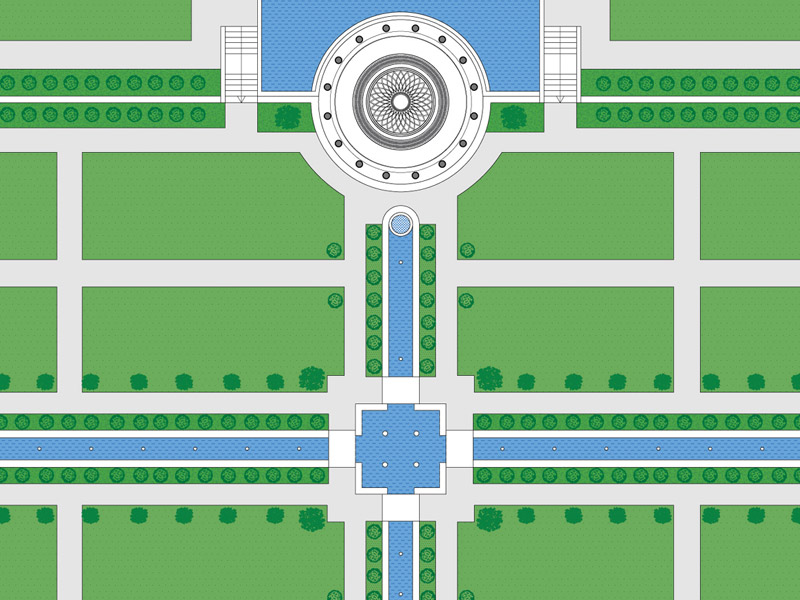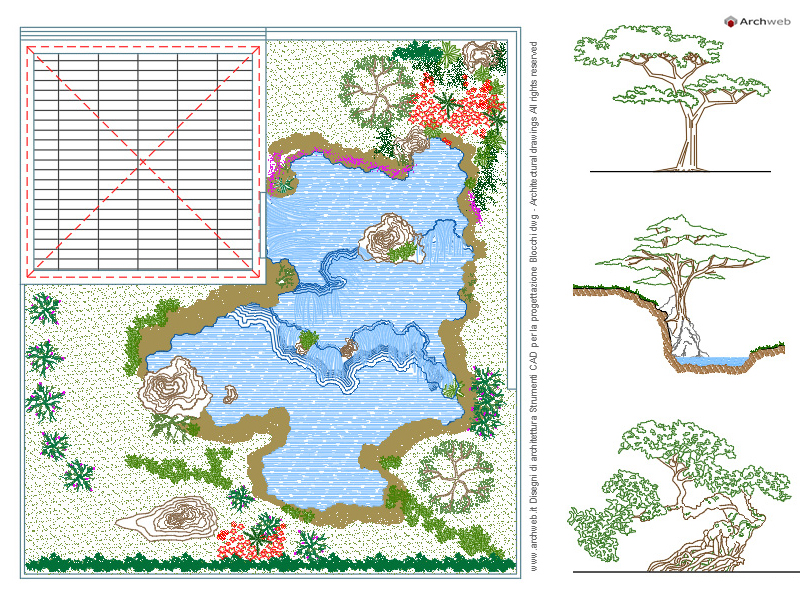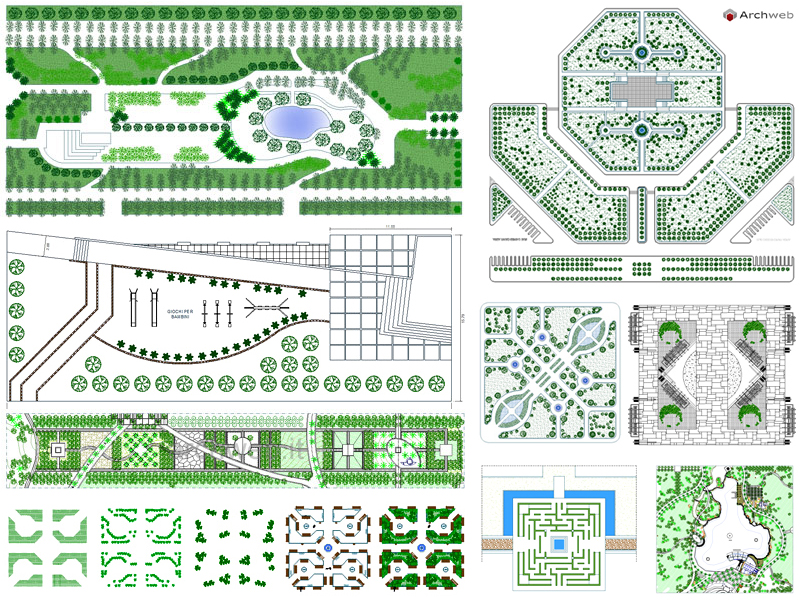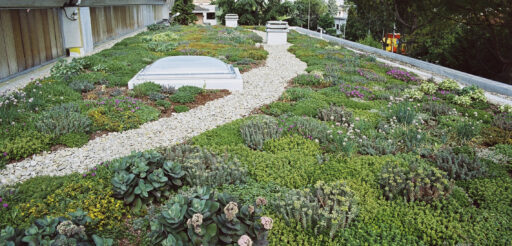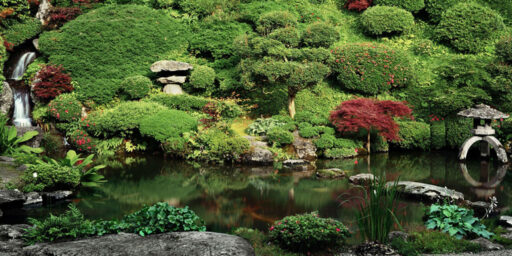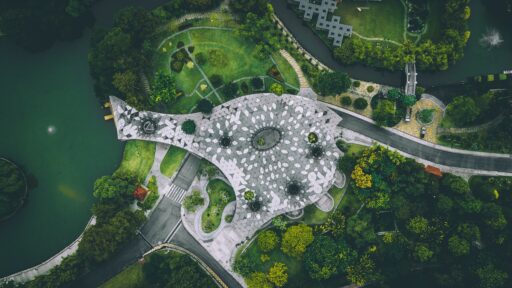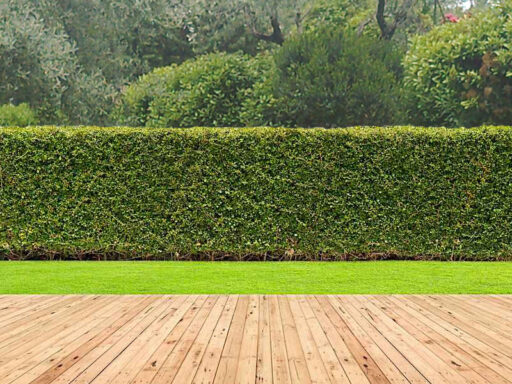The Mediterranean Garden
Advice for the design of a space and choice of plants
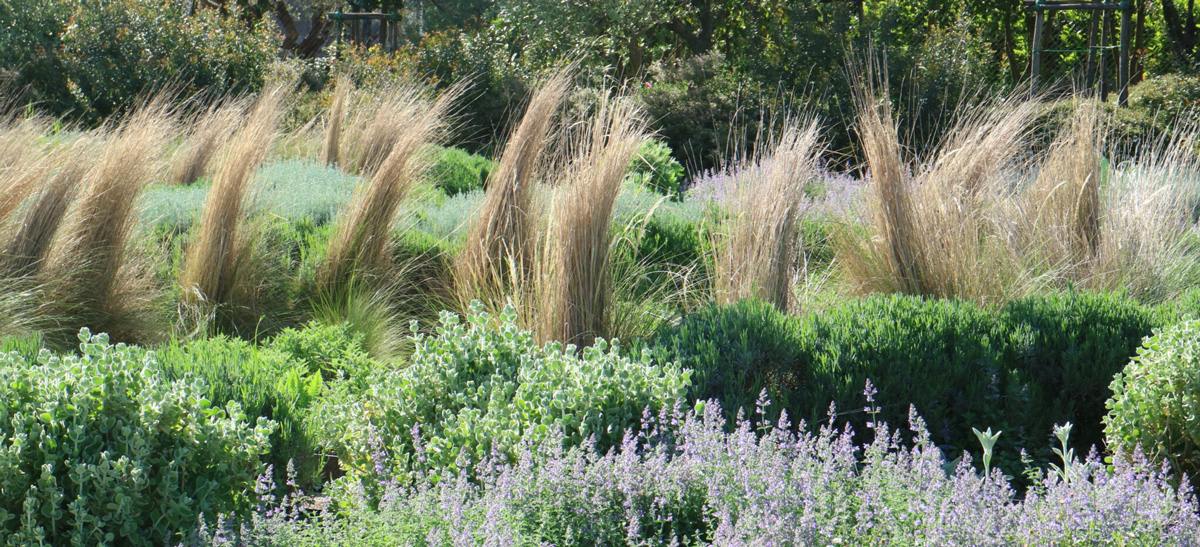
The biggest challenge in designing a garden is knowing how to find a balance between the climate in which it will be configured and the resource that will allow it to flourish, water.
In the Mediterranean garden, in fact, it is good practice to use native plants to ensure sustainable development over time.
In the same way, for example, the so-called English garden will result which will follow the same climatic conditions, and therefore with a different water supply and solar radiation compared to the Mediterranean one.
In both cases it is possible that some native types of plants can also be used in different climatic zones, but the compensation effort necessary in the design and maintenance phase of the garden (sustainable garden) must be taken into account.
The Mediterranean garden, in climates such as the Italian one, as well as promoting local diversity, contributes to the reduction of maintenance over time by self-regulating.
The evolution of the context of the territory and the related landscape is linked to its use in relation to human activity dating back to the Ice Age. These particular conditions have meant that the flora of the “Mediterranean” basin has developed with an immense vegetation richness over time. This high biodiversity is a characteristic element to be preserved through the predilection of native species that preserve its characteristics.
Aridity in the Mediterranean represents an extraordinary possibility, as the misuse of irrigation limits the growth and development of the garden itself. In soils with a lower supply of water, the development of the plants is favored by their original conditions, as if irrigated especially in the warmer seasons they tend to obtain the opposite effect and therefore develop very little; in the worst case scenario they might not even survive.
For example, Cistus, Ceanothus and Capparis spinosa (caper) do not tolerate heat combined with humidity, which in this case tends to cause the plant to die completely.
Instinct leads us to think that water is synonymous with a lush garden, while aridity is synonymous with shrinkage. In the case of the Mediterranean garden it is exactly the opposite, in fact in nature the flora in these climates is richer than temperate ones.
The plants of this type of climate during their evolution have had to specialize in adverse conditions; their diversification is given by the great ease of adaptation to the extreme situations of their different types of soil, exposure, latitude and altitude. This diversity constitutes an inexhaustible source for gardens.
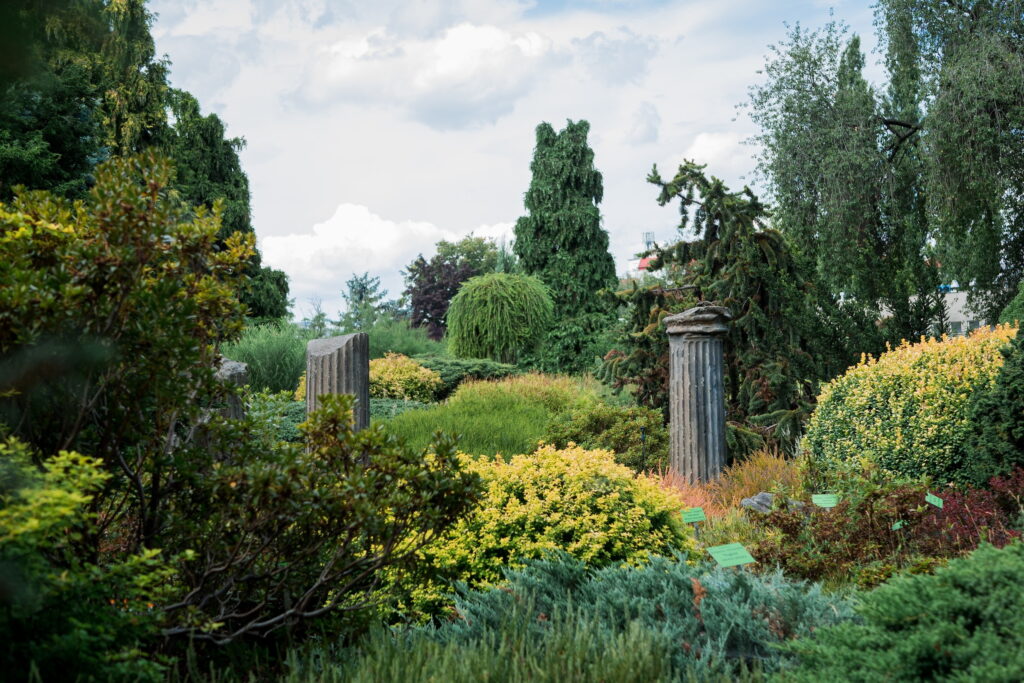
The composition of a Mediterranean garden implies not only the use of species typical of the climate zone with specific characteristics that we will see later, but also the types of soil which in most cases must ensure:
- a high, dry drainage characteristic.
a substantial reduction in irrigation especially in summer periods.
the use of mulch layers to limit water evapotranspiration which we will address specifically in future articles.
In composing a Mediterranean garden, therefore, in order to be able to compose it in the best possible way, in addition to the diversification of the species, it is necessary to understand how to plant and care for the vegetation in the different types of arid land, enhancing the diversity of their survival techniques, composing a green space that is aesthetically pleasing, original and functional.
The types of plants are many and different, they vary according to our needs, we can choose and dose the quantity of each of them and mix them to create the desired effect.
To do this we need to use, understand and understand the different types of plants that differ in the behavior of the species.
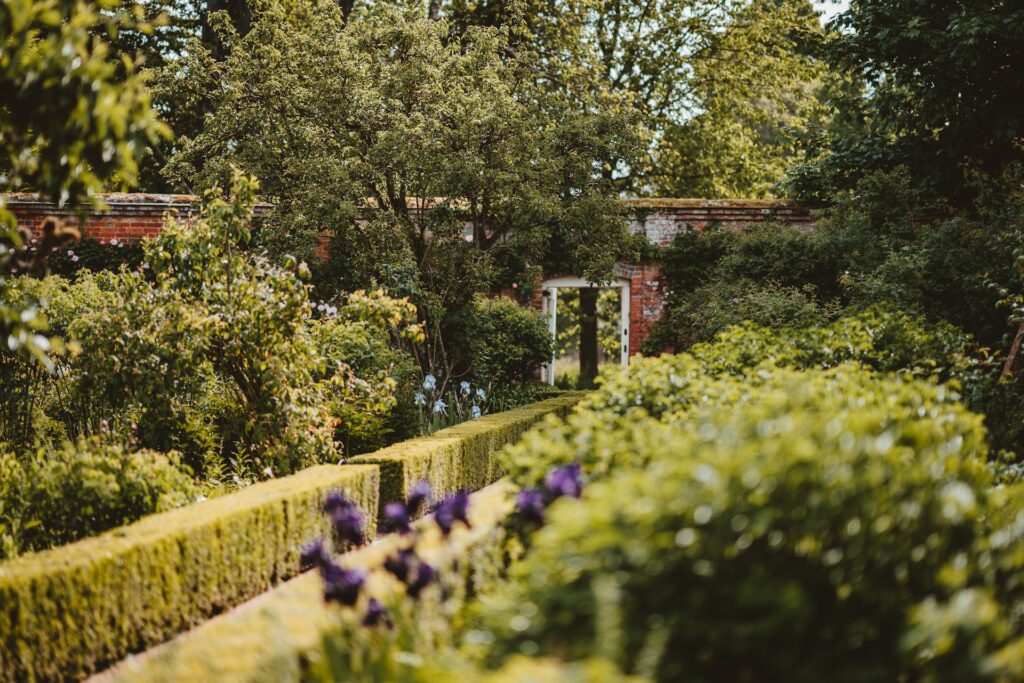
Annual plants
The characteristic of annual plants is given by the fact that they flower in a specific period of time; their main characteristic is that they disappear completely or partially when climatic conditions become difficult. Annual plants germinate and at the right time they drop seeds which in the following vegetative cycle will be ready to develop a new vegetative cycle.
With the rainy season the seeds will be able to develop shoots to be able to flower again, generally the vegetative rest is in winter, followed by a more vigorous phase in conjunction with the more favorable climate of spring, and then explode with flowering.
This type of plant has very showy flowers, this characteristic is given by the urge to attract pollinating insects to proceed to the next cycle after death.
In regions characterized by a desert climate, for example, the vegetative cycle is very short as rainfall is very rare during the year; in this case the plant, which is generally native, germinates the same day it rains, flowers quickly and dies in a few days, meaning that the seeds will remain hidden for the rest of the year until the moment of new germination.
Also in this case the colors are very vivid and the flowers can form a covering on the ground, almost as if it were a ground cover. The landscape of these deserts suddenly covered in flowers is an attraction of South Africa in Namaqualand, or on the Atacama coast of Chile.
In the case of the Mediterranean climate, annuals have a similar function. To support the growth of these plants, maintenance work will be carried out for the selective weeding of herbs, in order to maintain the wild annual plants, whose decorative flowering can represent an additional element. of value in the construction of a Mediterranean garden.
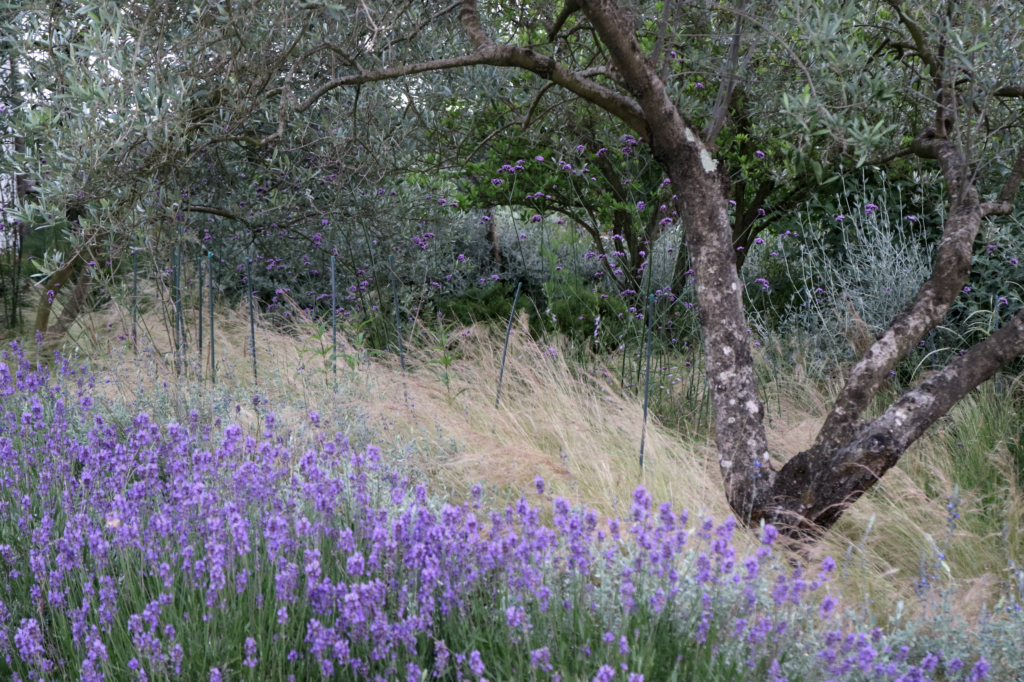
In building a zero impact garden the objective is to learn and know in depth the types of local plants and prefer these in the composition of a sustainable garden.
A small corner of annual species in the sustainable garden can, for example, represent an important reserve for pollinating insects and local fauna; this increases biodiversity, improves the natural balance and reduces diseases resulting from parasites in the rest of the garden.
To choose the most optimal position for the placement of a detailed corner of a garden I invite you to learn more with the Archweb article: Basic guide: garden design
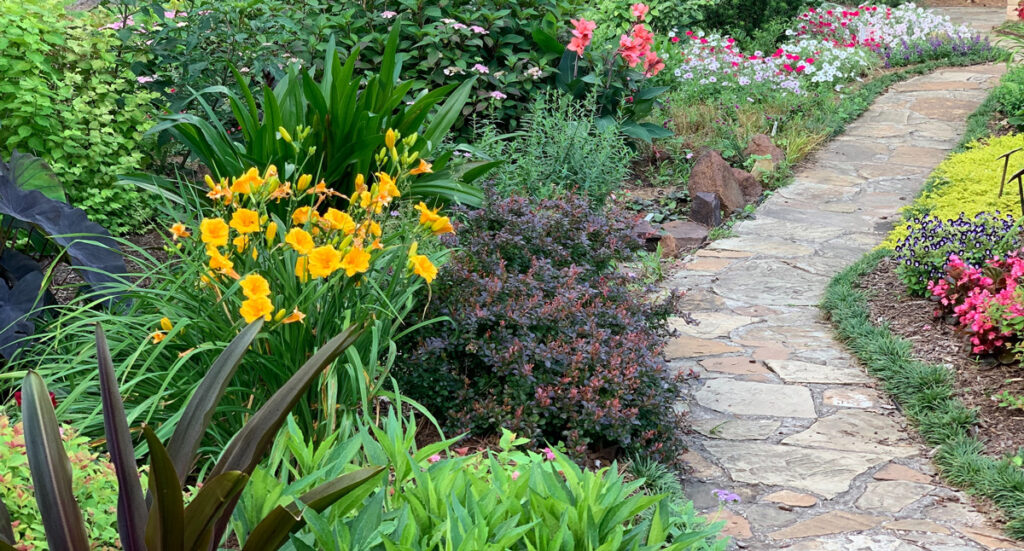
Geophytes
Geophytes are the plants commonly called “bulbous”, their characteristic is essentially given by the fact that they “hide” from the sun. There are different types of bulbs, such as the onion bulbs of tulips and daffodils, the pseudobulbs which have a swollen base of stems such as cyclamens and Stembergia, tuberous rhizomes which have fleshy horizontal stems such as asphodels, and Irises.
In this case the adaptation to aridity is very similar to annual plants, they disappear completely to survive. During the rest period the plant takes in all the nutrients and assimilates them in the underground tuberous organs. During the hot season, the plant withers completely but recovers completely during the vegetative cycle corresponding to the rainy season in autumn.
The blooms are generally very short but extremely decorative, an example is the Agapanthus which blooms in July and the Iris Unguicularis.
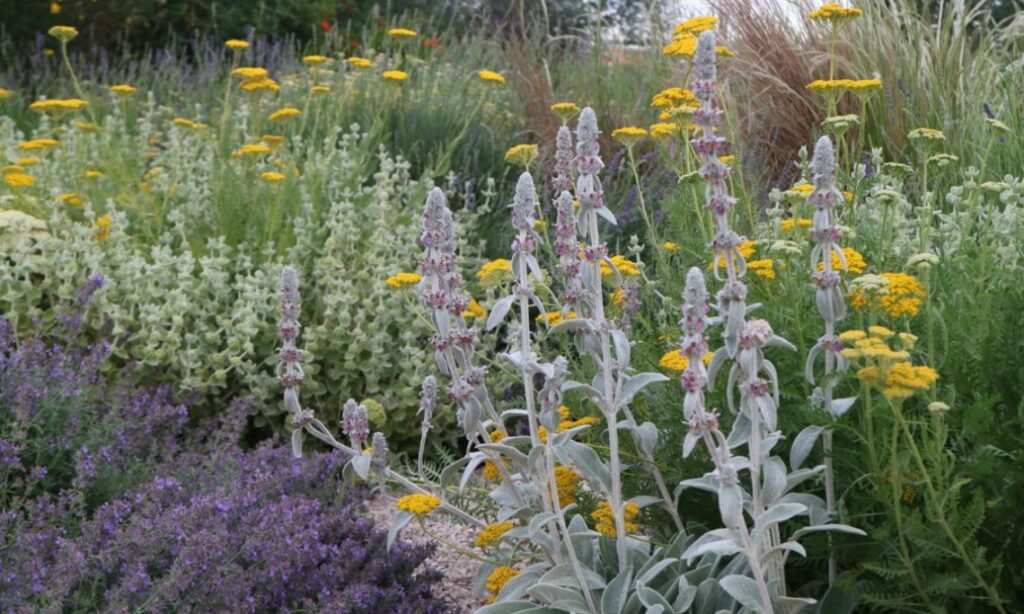
Le sclerofille
Sclerophyllous plants limit transpiration, developing persistent, thick and leathery leaves, the upper face of which is covered by a waterproof waxy cuticle, from which the Greek term skleros = hard, phyllon = leaf derives
In this type of leaves all the flocks are located on the lower surface of the leaf protected from the sun. The ostiole (small opening in the epidermal tissues of the plant) of the stomata is reduced to a minimum in summer to slow down dehydration. In some plants, the stomata are housed in “somatic crypts”, i.e. very deep holes equipped with “hair crypts” for the hairs which further reduce water loss, such as Nerium oleander.
There are many sclerophyllous plants of the Mediterranean scrub such as Quercus Ilex (holm oak), Arbutus Unedo (strawberry tree), Phillyrea, Pistacia lentiscus (mastic tree), Mirtus communis (myrtle).
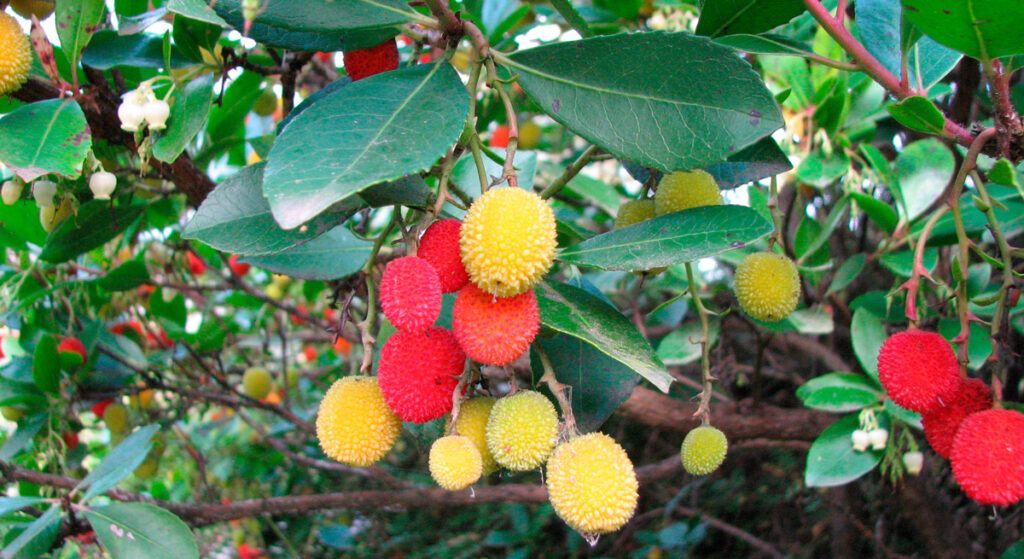
Deciduous plants
Deciduous plants are characteristic of areas characterized by a very accentuated arid climate. To resist this type of climate they completely lose their leaves at the beginning of the dry season. In this phase of plant development we have a total energy saving given both by the production of leaves and by non-existent photosynthesis. The fall of the leaves can also be considered ornamental, some plants such as the shape of Sarcopoterium, without the leaves takes on a curious and original shape. We can therefore say that plants tend to show greater strategies for accumulating water if there are conditions of water restriction.
To do this they apply some different strategies such as reducing the surface area exposed to the sun and evapotranspiration, through the epidermal cells. Rosemary, for example, has a singular characteristic: if you look at it closely you can notice that the edges of the leaf are rolled up towards the lower surface, this means that the surface of the leaf is much wider, allowing it to have an optimal photosynthesis, but reducing direct exposure to the sun’s rays and therefore water loss through evapotranspiration.
In the case of cacti, however, the optimization of water loss becomes a priority process, the leaves disappear completely and are transformed into thorns that guarantee defense against predators and the stem ensures photosynthesis.
By decreasing the leaf surface there will obviously be less photosynthesis which in turn will greatly reduce the growth of the species (slow growing plants).
Another plant strategy to reduce the exposed surface is to keep the leaves in a horizontal position to receive the sun’s rays perpendicularly, an example of which is grasses.
In reducing the loss of water by the plant, however, in certain climatic conditions, as an adaptation, some plants develop protection with hairs, this now allows them to reflect light and reduce heat at the level of the leaf surface, directly reducing evapotranspiration.
The hairs also perform a windbreak function, in fact they create a microclimate useful for maintaining the gaseous exchanges of photosynthesis. This diversity offers a variety of choices in the creation of a garden given both by the color shades of the plants and by the type of leaves and their appearance. In an arid garden, therefore, the silvery foliage of Tanacetum densum can become an excellent base for enhancing plants with brighter and brighter colors such as salvias.
Cover photo: Assogna Stefano
References
For a Mediterranean garden. Greenery without irrigation O. Filippi
Tracanni.it
actaplantarum.org
© Archweb.com riproduzione riservata – E’ possibile condividere con un link alla pagina



























































